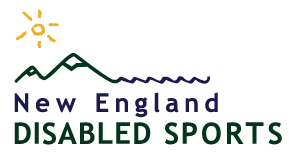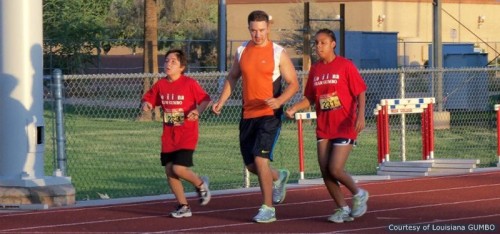About New England Disabled Sports
New England DisAbled Sports is a national recognized program which provides year round adaptive sport instruction to adults and children with physical and cognitive disAbilities.
Their programs allow individuals with disabilities to enjoy a boundary-free environment, enjoy outdoor recreation with friends and family, as well as provide access to equipment and instruction that might otherwise be unavailable.
Their Mission:
The Mission of New England Disabled Sports is, through sports, to change lives affected by disabilities. Download New England Disabled Sports brochure
Their Vision:
They envision a world where disabilities are not barriers.
Their Values:
- They embrace volunteerism
- They foster community
- They strive for excellence
- They listen to and learn from everyone
- They nurture personal development through high-quality training and instruction
- They strive for diversity
Winter Activities
Alpine Skiing
Mono skiing
The mono ski is a device used mainly by people with limited use (or absence) of the lower extremities. A mono ski, also known as a sit-ski, consists of a molded seat mounted on a metal frame. A shock absorber beneath the seat eases riding on uneven terrain and helps in turning by maximizing ski-snow contact. Modern mono skis interface with a single, ordinary alpine ski by means of a “ski foot,” a metal or plastic block in the shape of a boot sole that clicks into the ski’s binding. A mono skier use outriggers for stability; an outrigger resembles a forearm crutch with a short ski on the bottom. People new to mono-skiing are often surprised to see how much terrain is skiable in a mono ski; advanced mono skiers can be found not only carving turns on groomed runs but also skiing moguls, terrain parks, race courses, glades and even backcountry terrain—in short, wherever stand-up skiers can go.
Bi-skiing
A bi-ski is a sit ski with a can be skied independently like the mono-ski with hand-held outriggers, or can be skied with the assistance of an instructor using stabilizing outriggers and tethers. The skier moves his or her head, shoulders or hand-held outriggers to turn the bi-ski. The bi-ski has a lift mechanism for getting onto a chairlift. It can also be used to accustom a new sit-skier to the snow before moving to a mono-ski. Bi-skis are used by people with upper and lower limb impairments and with poor balance. People with these impairments might bi-ski:
- Cerebral palsy
- Multiple sclerosis
- Muscular dystrophy
- Amputees
- Spinal cord injury
- Severe epilepsy
- Spinal bifida
- Severe balance impairment
Outriggers are metal elbow crutches with the tip section of a ski pivoted on the bottom of the crutch. Some outriggers have adjustable brakes attached to the back edge of the ski to give some speed control. Outriggers are used to aid balance and/or to give support. Outriggers are used by mono-skiers, bi-skiers and standing skiers needing aid with balance.
3-Track & 4-Track skiing
3 track skiing is defined as skiing on one ski with outriggers to maintain balance. The student is able to stand on one ski and maintain dynamic balance with the assistance of outriggers (poles). 4 track skiing is very similar to 3 track but the skier has 2 feet on skies, rather than one.
Visually Impaired
Alpine (downhill) skiing is one of the rare opportunities available that allows the blind individual to move freely at speed through time and space. It provides the opportunity to embrace and commune with the primal force of gravity, thus experiencing the sheer exhilaration of controlled mass in motion, in a physically independent setting.
For those with Visual Impairment, a sighted Guide is needed. For lesser impairment the guide may simply need to ski a short distance in front of the skier to show the way. Skiers with greater vision loss or who are totally blind will generally ski using a headset arrangement to give audible instruction.
Snowboarding
Snowboarding has become very popular with New England DisAbled Sports students. People with cognitive or physical disAbilities are able to participate and experience the thrills of riding the mountain. The number of snowboarding lessons increases each year as the sport grows in popularity within our community. New England DisAbled Sports offers ski and snowboard lessons daily throughout the winter season.
Snowshoeing
Come explore the snow trails and fresh air of the mountains covered in snow while snowshoeing. Enjoy a winter hike in the woods from the more stable base of snowshoes. Take in peaceful scenery while working to improve your physical fitness level, balance and spatial awareness. You’ll love it!
Winter Biathlon
A seemingly unlikely combination of events – one is an aerobic activity (skiing or running) which requires strength, speed and endurance; the other is a passive activity (shooting) which requires concentration and a steady hand (difficult after you’ve been skiing, running or walking all out!).


